Reorganization of the Army
The following is a guest post by Brian Kitchen. Learn more about Brian at the end of this post.
The late Roman Army in Britain bore very little resemblance to the army of the Emperor Claudius, which had conquered the island in 43ad. By the late 4th century, the time I write about in my ‘Divided Empire’ series of novels, there had been a complete reorganization of the army.
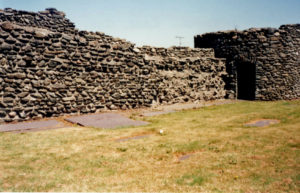
The army in Britain no longer relied solely on the Legions based at York, Chester, and Exeter and auxiliary regiments based in forts throughout the island, which had previously composed the army which had for centuries occupied Britain.
The enemy that the Roman army was now facing was no longer the people of the island it had occupied, but barbarian enemies that were raiding its shores and the forces to meet this new challenge had to change.
From the third century, Britain had periodically suffered raids and incursions from the Empire’s barbarian foes. The Roman historian Eutropius wrote that during the 280s the coasts of Belgica and Armorica (modern day France, Belgium and the Netherlands) were ‘infested with Franks and Saxons’.
To meet the new threats to Britain, a chain of forts was built along the eastern and southern shores of Britain, with some also being built along the west coast too. The forts at Cardiff and Caer Gybi (Anglesey, Wales) may be part of this chain. The Notitia Dignitatum a late Roman Document which lists the army commands in Britain, has the commander of the garrisons of this chain of forts, now known as the ‘Saxon Shore’ command, listed as the Comes Litoris Saxonici per Britanniarum.
In the north of Britain, the army command there had also been reorganised with the forts of Hadrian’s Wall and northern Britain, now coming under the command of the Dux Britanniarum. A chain of signal stations was built along the north-east coast of Britain, the foundations of one of them can still be viewed at Scarborough Castle, Yorkshire.
The Barbarian Conspiracy
The threat to the security of the island was so serious, that the Emperor dispatched a task force from his field army to Britain to assist in restoring order. It is because of this raid that some historians believe that a further new military command was set up in Britain, under the command of the Comes Britanniae.
A listing appears in the Notitia Dignitatum listing the forces under his command, six cavalry regiments and three of infantry, a mobile task force equipped and ready to move throughout Britain to wherever it was required.
Towns which previously hadn’t been walled before, were also now walled and towers for artillery were added to existing walls. The Multangular Tower which can be viewed in the Museum Gardens in York is an example of the kind of towers which were built to strengthen defences.
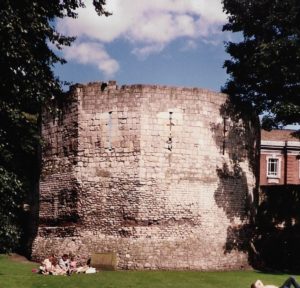
Above is a Multangular Tower in YorkDuring the fourth century, the Picts from the north of Britain, the Scots and the enigmatic Attecotti from Ireland and the Franks and Saxons from the continent had plagued Britain with a series of raids. The raids culminated in 367ad in what is known as the ‘Barbarian Conspiracy’, when the Picts, Scots, Attecotti and Saxons made a combined attack on Britain. During the fighting, the Dux Britanniarum was killed, along with what it is thought to have been the Comes Litoris Saxonici.
A lot of the troops now deployed to defend Britain were Limitanei, troops who were stationed in frontier districts, like in the forts along Hadrian’s Wall.
Some historians have suggested that these Limitanei troops may have been part-time soldiers, who were given land to farm during peacetime, being called up for duty when danger threatened.
The Later Roman Army
So, what of the other forces of the Roman Army in Britain, where were they based and what was their composition now? The Roman soldier of the 4th Century looked very different from the Roman Legionary of the early empire. By the late 4th Century the army comprised of more cavalry units than infantry, arising from the need to move quickly to wherever the raiders struck.
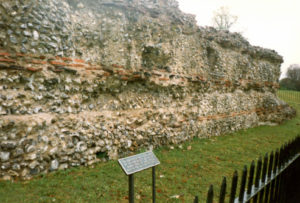
Heavier cavalry, such as the armoured Cataphracts and Horse Archers were being increasingly deployed. The weapons and armour of the troops was very different to that of the legionaries and auxiliaries of the earlier empire.
Some infantry now wore no armour, relying on their shields for protection and missile-type weapons like the Plumbata and dart-type weapons were commonly used. A lot of the forts in the interior of Britain were abandoned and more troops were now based in the towns and cities.
In the Roman town of Viroconium (modern day Wroxeter) evidence that troops were based there has been found during excavations, with Plumbata being found in the ruins of the basilica there. For all these changes however, the Western Roman Empire eventually fell to the barbarians and although Britain held out into the 6th century it too also eventually fell.
Brian J Kitchen – Author Bio
I live in Burton upon Trent, England and am married to Lynne and have a son, Mark and two tortoise shell cats, Tansy & Zoe. I enjoy walking in the countryside, photography, reading, writing, visiting museums and historic sites & buildings and supporting Burton Albion.
I first became interested in the history of Roman Britain as a child and loved the ‘Eagle of the Ninth’ trilogy of novels by Rosemary Sutcliff. When I was older I read & studied all that I could about the history of the period, visiting many museums and archaeological sites to further improve my knowledge.
I’ve always had a passion for writing and when I retired from Local Government service, I wrote a column in our local newspaper for two years and also decided to write novels set in late 4th Century CE Roman Britain. The first of the Flavius Vitulasius Novels, ‘Divided Empire’ is my first published novel, but there are many more to come. I hope that you enjoying reading them as much as I’ve enjoyed writing them.
Should you wish to know more about Flavius & his friends, please visit my website, Facebook, and Twitter pages:
Links to Brian’s books…
View on Amazon
View on Amazon UK
View on Amazon
View on Amazon UK

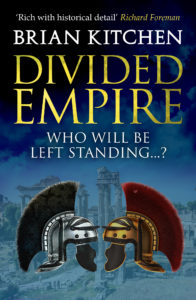
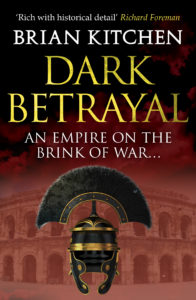
Really enjoyed your post. I was in York last week.
Thank you Kryssie. Did you get to see the Multangular Tower? It’s in the Museum Gardens.